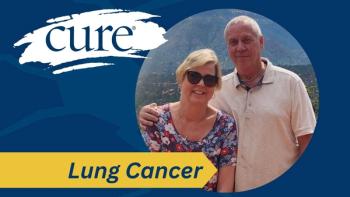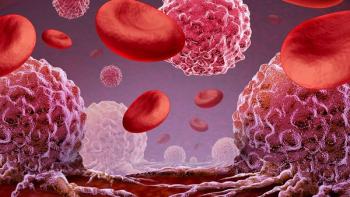
Presurgical Radiation May Be a ‘Game Changer’ in Breast Cancer
Radiation followed by mastectomy and immediate breast reconstruction “holds tremendous promise,” as one researcher explained.
Preoperative radiation therapy for patients with breast cancer who need a mastectomy and desire breast reconstruction is “a very exciting and innovative new option that we believe substantially improves quality of life for patients,” as one expert told CURE®.
“This strategy holds tremendous promise for improving quality of life with regard to the local regional treatment for patients with more advanced breast cancers,” said Dr. Benjamin Smith, professor of radiation oncology and health services research at The University of Texas MD Anderson Cancer Center in Houston.
Smith was part of a team of researchers from MD Anderson Cancer Center who published their findings in JAMA Network Open, stating that they found radiotherapy followed by mastectomy and immediate breast reconstruction to be “feasible and safe, shortening the time to complete breast reconstruction.”
LEARN MORE:
The phase 2 study, conducted between August 2018 and August 2022, had 49 evaluable participants, with a median age of 48, of whom 46 (94% of patients) had received neoadjuvant (presurgical) systemic therapy and 48 underwent mastectomy with immediate breast reconstruction at a median of 23 days after radiotherapy. According to a news release from MD Anderson Cancer Center, this was the first study in the United States to show the benefits of a change to treatment order.
“Our trial represents a pioneering achievement in the U.S., demonstrating the safety and effectiveness of this paradigm-shifting treatment sequence for patients with breast cancer,” said lead author Dr. Mark Schaverien, associate professor of plastic surgery, stated in the news release. “This sequence not only enhances surgical outcomes but also eliminates the need for patients to defer breast reconstruction surgery, significantly enhancing their quality of life."
Researchers reported no complete autologous flap losses. One of the two patients who had tissue expander placement had the expander removed. Eight patients (17%) experienced mastectomy skin flap necrosis of the treated breast, and one of these patients underwent reoperation.
In a median follow-up of 29.7 months, researchers stated that there were no locoregional recurrences or distant metastasis. Additionally, MD Anderson noted in the news release, that the rate of surgical complications following the procedure was comparable to the complication rate from the standard of care.
“The typical patient for whom this is a good fit is as a younger healthy woman with lymph node-positive breast cancer and a larger tumor,” said Smith. “[Their disease is] typically not HER2-positive, [it is] typically triple-negative or estrogen receptor-positive. And those patients, based on their tumor size and/or their age, are going to need a mastectomy. Based on their clinical characteristics we know they need radiation, and based on being relatively young and fit, they are good candidates for autologous reconstruction.”
While current standards of care vary depending on the institution, Smith said that at MD Anderson patients now typically undergo surgery, including the placement of a tissue expander, followed by 25 to 30 radiation treatments starting six weeks later, then breast reconstruction surgery six months or so after that.
The streamlined alternative sequence of events, Smith said, offers improvements to patients’ quality of life.
“This approach is like a real game changer because if we know the patient's going to need a mastectomy, we know they need reconstructive surgery or they desire reconstructive surgery, and we know they need radiation, by giving the radiation first we get the radiation out of the way right away, which is great,” Smith said. “And then, about three weeks later, they go to the OR, they have their mastectomy, they have their lymph node surgery, and while they're still asleep their reconstructive surgery is performed.
“So, they wake up, done with cancer surgery done with the major part of reconstructive surgery. There could be a revision in the future that that's minor, more [of an] outpatient procedure. And then there's a hospital for about three to five days afterward. But then they go home from the hospital. And they're basically done with all their major cancer care.”
Patients may undergo postsurgical treatment regimens such as hormone therapy or immunotherapy “but all the major treatment, all the chemo, all the radiation, all the surgery, essentially is done,” Smith said.
“Six months down the road, these people have their lives back,” he said. “They're working full time, they look good, they're socializing. Their life is pretty normal. Whereas the patients with the standard of care, they're preparing for a big surgery and basically [preparing] to be out of commission for eight weeks. And it's their second big surgery because they already had one about six months earlier. So just from a logistical managing life perspective, this sequencing is so much better for patients.”
The findings resulted in the launch of the phase 3 TOPaz trial, which is now enrolling patients and will compare the standard amount and timing of radiation treatment with a reduced dose prior to surgery, according to MD Anderson Cancer Center.
For more news on cancer updates, research and education, don’t forget to





